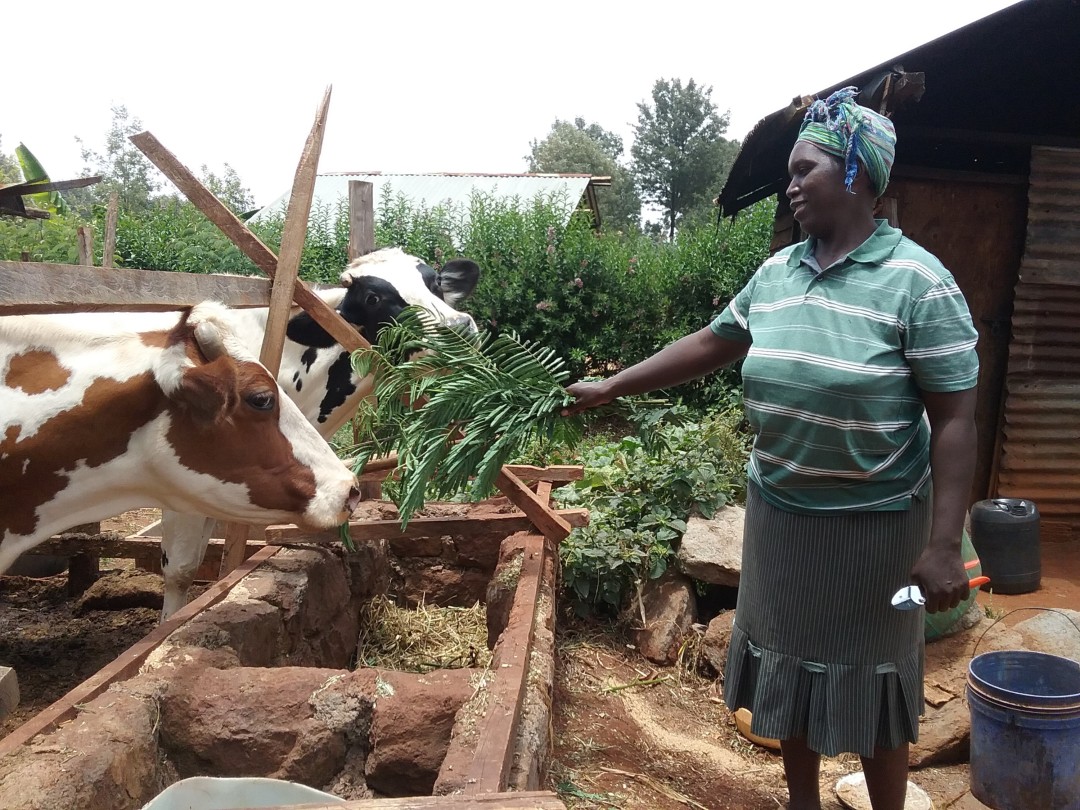Ikinu Forest Garden project
The project led by Trees aimed to permanently lift 325 small-scale dairy farmers out of poverty in Ikinu, Kenya, through more sustainable farming practices. This entailed providing families with the skills, knowledge and resources to design, plant and manage a Forest Garden that combined diverse varieties of locally-appropriate crops and trees. These were to provide families with sustainable food sources, livestock fodder, fuel and forest products that could be consumed or sold at nearby markets. The overall goal was to produce more nutritious foods and increase household incomes, while enhancing the environmental sustainability of community farming practices.
By the end of the project, 481 small-scale dairy farming families, exceeding the original projection, sustainably improved their livelihoods thanks to more sustainable and lucrative farming practices. More than 2,759,046 trees in 481 Forest Gardens, covering 492 acres of land, were planted. Household food security and resilience to economic and climate instability were sustainably increased. Farmers from the project were also trained on sustainability planning, enabling them to collaborate and share best practice. Beneficiaries passed on their knowledge and skills to others in their communities through the “Plant it Forward” principle.
Trees for the Future is an American public charity founded in 1989 to combat poverty and unsustainable land use practices in the developing world. Its mission is to provide farmers with the opportunity for prosperous and resilient livelihoods by enabling them to restore their environment, grow more food and build a sustainable future.
Type
Environment / Community DevelopmentDuration
July 2015 -June 2019Location
Ikinu / KenyaWith whom
Trees, (previously Trees for ther future)
Website


Kenya
Population
49.7 million (2017)
Per Capita Income
USD 1,460/year (2017)
Poverty rate *
36% (2015)
Literacy rate
79% (2016)
Human Development Index
142nd out of 189 countries (2018)
Kenya’s macro-economic conditions have progressed over the past decade, improving the welfare of its population. However, a quarter of its population lives in urban informal settlements, arid and semi-arid rural areas and remain vulnerable to poverty, conflict, structural underdevelopment and disease. Even though national absolute poverty has declined overall, it remains high compared with neighbouring countries. Primary school enrolment has reached 100%. Access to household services such as electricity, improved drinking water and sanitation has steadily increased, even though coverage remains low (23%, 47% and 33% respectively). Youth unemployment and vulnerability to climate change remain key challenges.
Sources: World Food Program, UNICEF, World Bank, 2016 Human Development Report, Human Development Indices and Indicators (2018 Statistical Update)
*The percentage of the population living below the national poverty line.